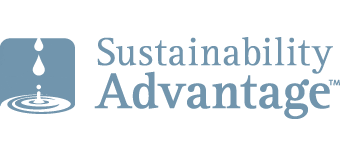Sustainability – Announcing the Future-Fit Business Benchmark
Ta-dah! As promised in my last blog, Public Draft 1.0 of the Future-Fit Business Benchmark is now available for use and feedback. This free, open-source resource defines science-based, aspirational, sustainability goals for a company that desires to be fit for the future on a scarcer, more crowded, and hotter planet. We invite your feedback on the goals and your ideas on appropriate key performance indicators (KPIs) by which to assess progress toward each goal.
To recap, here is the what, why, who, how, and when of the Future-Fit Business Benchmark.
What it is
A sustainable future-fit business is defined as a company that creates net positive environmental, social, and economic value throughout its value chain. If it were to operate forever, it would not only do no harm to society and nature, it would do well by doing some net good. The Future-Fit Business Benchmark defines the necessary and sufficient level of performance on 28 environmental and social goals for a future-fit company.
Why we created it
We are uneasy that the pace of progress is not fast enough to get us to where best-available science says we need to be for flourishing human societies and thriving economies on our finite planet. In order to blow the smoke away from the sustainability goal line, we need to answer two questions:
- How would we recognize a truly sustainable, fit-for-the-future business if we saw one?
- How much is enough?
We believe that when businesses see the gap between their current performance and the necessary future-fit level of environmental and social performance, they will abandon their incremental efforts and embrace innovative breakthrough efforts. Attaining the benchmark level of performance is not a sacrifice; we identify benefits to the company if they attain each goal. Some companies may find that they need to redesign their business model to reach the benchmark and capture the benefits.
Who’s “we”
The project is co-led by Chad Park (TNS Canada) and Geoff Kendall (3DIF). Pong Leung (Travesia Partners), Antony Upward (Edward James Consulting), Martin Rich (3DIF), and I (Sustainability Advantage) are on the core team with Chad and Geoff. Saralyn Hodgkin (TNS Canada) is the project manager. Plus, over a hundred experts have helped us shape the benchmark over the last couple of years.
Who the benchmark is for
There are five intended user groups.
- Companies, who can adopt the benchmark goals as their aspirational goals. Companies which already have similar goals are referenced in the document.
- Investors, who need to assess which companies are best positioned to mitigate the risks and capture the opportunities created by global sustainability megaforces.
- Raters, who can integrate the benchmark goals into their scoring methodologies and standards.
- Consultants and sustainability advisors, whether for-profit or not-for-profit, who can integrate the benchmark goals into their methodologies and tools.
- Business schools, who can use the benchmark as a focal point for students and faculty to discuss and debate how business activities can help – or hinder – attempts to address today’s biggest societal and environmental issues as they future-proof themselves
- Policy makers, who can use the benchmark as a north star as they prioritize changes to business regulations and incentives with a view to delivering more positive outcomes.
How
- Step 1: Over the last two years, with help from hundreds of experts, we identified a set of 8 science-based system principles that collectively describe how human society can flourish within the physical limits of our finite planet. Then we used the systems principles to determine 8 corresponding design constraints for any company, as an influential actor in society.
- Step 2: Using best-available science, we created a set of 28 future-fit, context-based goals that every company must reach if it aspires to be fit for the future. Attaining the goals enables the company to thrive within its design constraints.
- Step 3: Next, we will refine the goals with help from the public and experts, and develop appropriate key performance indicators (KPIs) that can be used to assess how far away any company is from reaching the future-fit goals.
When
We are at Step 2. We are releasing Public Draft 1.0 of the Future-Fit Business Benchmark now, for public and expert feedback by December 31. We’ll then refine the draft and incorporate KPIs for each goal. By summer 2015, we will release a version that includes both the goals and their associated KPIs by which to measure progress.
This is an exciting moment. For years, we have needed a more rigorous set of sustainability performance criteria by which companies can be rated. Now we have that benchmark. With your help, by mid-2015 we will refine the goals and agree on the KPIs by which to measure company progress toward a future-fit level of performance.
We’re on a roll. Help us get this right by giving us your feedback and suggestions on Public Draft 1.0.
Bob
The above slides will be added to the next release of my Master Slide Set, to which you are invited to subscribe.
Please feel free to add your comments and questions using the Comment link below. For email subscribers, please click here to visit my site and provide feedback





